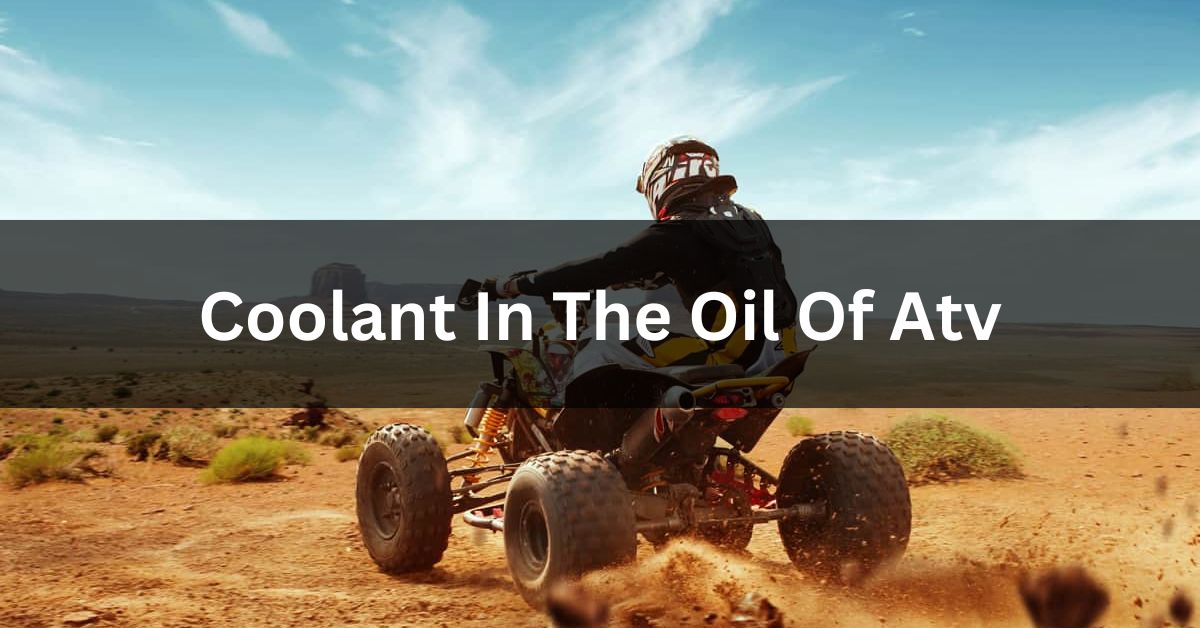All-terrain vehicles require regular maintenance to keep them in good condition, and one common issue that riders may encounter is finding coolant in the ATV oil.
It can be a severe problem that can cause engine damage if not addressed promptly.
Several potential causes of coolant mixing with oil in an ATV engine include a damaged head gasket, cracked engine block, or faulty oil cooler.
Regular maintenance, monitoring engine temperature, inspecting the cooling system, and using high-quality parts can help prevent coolant from mixing with the oil in an ATV engine.
In this article, we will explore the reasons for coolant in ATV oil, the symptoms of the problem, and how to fix it.
Reasons For Coolant In ATV Oil
There are several reasons why coolant may mix with the oil in an ATV engine. The three most common reasons are:
1. Cracked Or Damaged Engine Block

The engine block is the main component of the engine that houses the cylinders, pistons, and other vital parts.
It is also responsible for containing the coolant circulating through the engine to keep it from overheating.
If the engine block develops a crack or other damage, it can allow coolant to leak into the oil passages.
Once coolant mixes with oil, it can cause severe problems for the engine.
Coolant is not as effective as oil at lubricating moving parts, and it can cause damage to the engine bearings and other components.
2. Faulty Head Gasket
The head gasket is a critical component that separates the engine block and cylinder head, allowing the engine to function correctly.
It also seals the oil and coolant passages to prevent them from mixing.
If the head gasket becomes damaged or worn, it can allow coolant to leak into the oil passages.
Other symptoms, such as loss of power, white smoke from the exhaust, and overheating, often accompany it.
The white smoke is caused by the coolant burning in the engine, which can also lead to a sweet smell coming from the exhaust.
3. Overheating
Overheating occurs when the engine temperature exceeds the recommended operating range, which can cause damage to the engine components and result in coolant leaking into the oil passages.
Many factors can cause an ATV to overheat, including a malfunctioning radiator, water pump, or thermostat.
The ATV may sometimes operate in extreme temperatures or conditions, such as deep mud or sand, which can strain the engine.
Many factors can cause an ATV to overheat, including a malfunctioning radiator, water pump, or thermostat.
The ATV may sometimes operate in extreme temperatures or conditions, such as deep mud or sand, which can strain the engine.
If you notice that your ATV is overheating, it is essential to address the issue promptly to prevent further damage to the engine.
It may involve replacing a faulty component or adjusting your riding habits to avoid overheating in the future.
Symptoms Of Coolant In ATV Oil
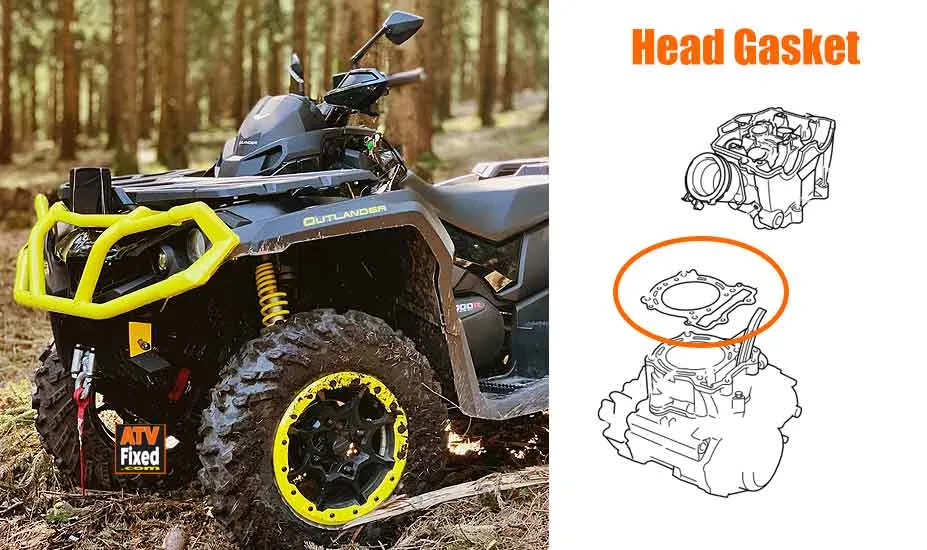
If coolant mixes with the oil in an ATV engine, there are several symptoms that you may notice. These include:
- Milky or frothy oil: If you check the oil level in your ATV and notice that it has a milky or frothy appearance, this could be a sign that coolant has mixed with the oil. Coolant is lighter than oil and tends to rise to the top of the oil pan.
- Overheating: If your ATV engine is overheating, this could be a sign that coolant has leaked into the oil passages. Overheating can cause severe damage to the engine components and should be addressed promptly.
- Loss of power: Coolant in the oil can cause the engine to lose control, which can be noticeable while riding.
- The sweet smell from the exhaust: If you notice a sweet smell coming from the exhaust of your ATV, this could be a sign that coolant is burning in the engine.
- White smoke from the exhaust: If your ATV emits white smoke, this could be a sign that coolant is burning in the engine. A sweet smell often accompanies it.
- Engine misfires: Coolant in the oil can cause the engine to misfire or run roughly, affecting performance and making the vehicle difficult to operate.
How To Fix Coolant In ATV Oil?
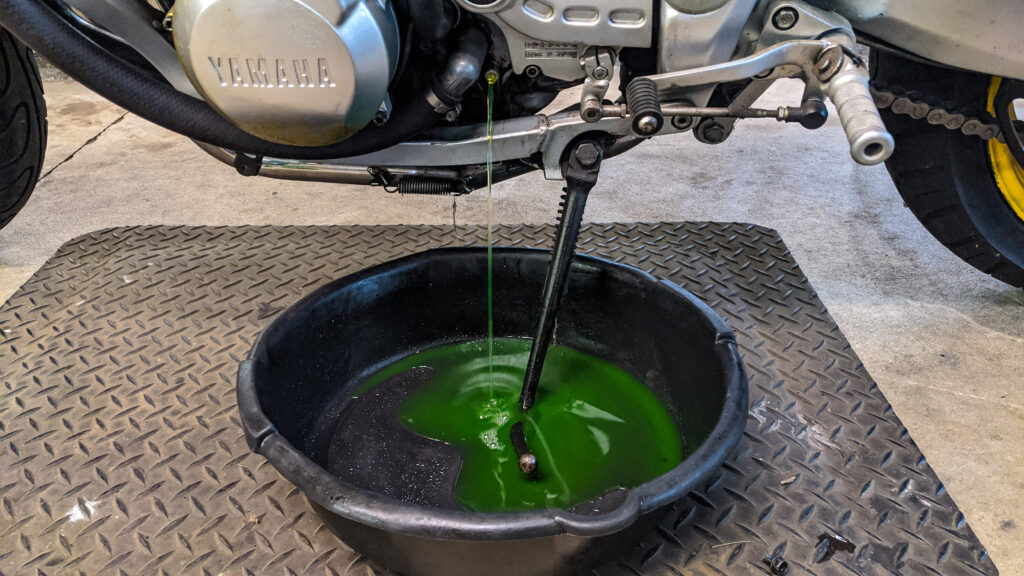
Fixing coolant in ATV oil can be a complex and expensive process, depending on the cause of the problem. Here are some common steps that a mechanic may take to fix this issue:
- Drain the oil: The first step is to drain the contaminated oil from the ATV. The mechanic must remove the drain plug and let the oil drain completely from the engine.
- Flush the engine: After the contaminated oil has been drained, the mechanic must flush the machine with a cleaning solution to remove any remaining coolant. This process typically involves adding a cleaning solution to the engine and running it briefly before draining it.
- Replace the oil filter: It is essential to replace it after flushing the engine. The old filter may be contaminated with coolant and unable to filter the oil properly.
- Inspect the engine: Once the oil has been drained and the engine has been flushed, inspect the machine to determine the cause of the coolant in the oil. It may involve checking the engine block and head gasket for cracks or damage.
- Repair or replace damaged parts: If the mechanic finds the engine block or head gasket cracked or damaged, it must be repaired or replaced. It can be a complex and expensive process and may require the engine to be disassembled.
- Pressure test the cooling system: Once any damaged parts have been repaired or replaced, the mechanic will need to pressure test the cooling system to ensure that there are no leaks or other issues that could cause coolant to mix with the oil again in the future.
- Refill the engine with oil and coolant: Once the machine has been repaired and tested, the mechanic will need to refill it with fresh oil and coolant. It is essential to use the manufacturer-recommended oil and coolant types and levels to avoid further problems.
Preventing Coolant In ATV Oil
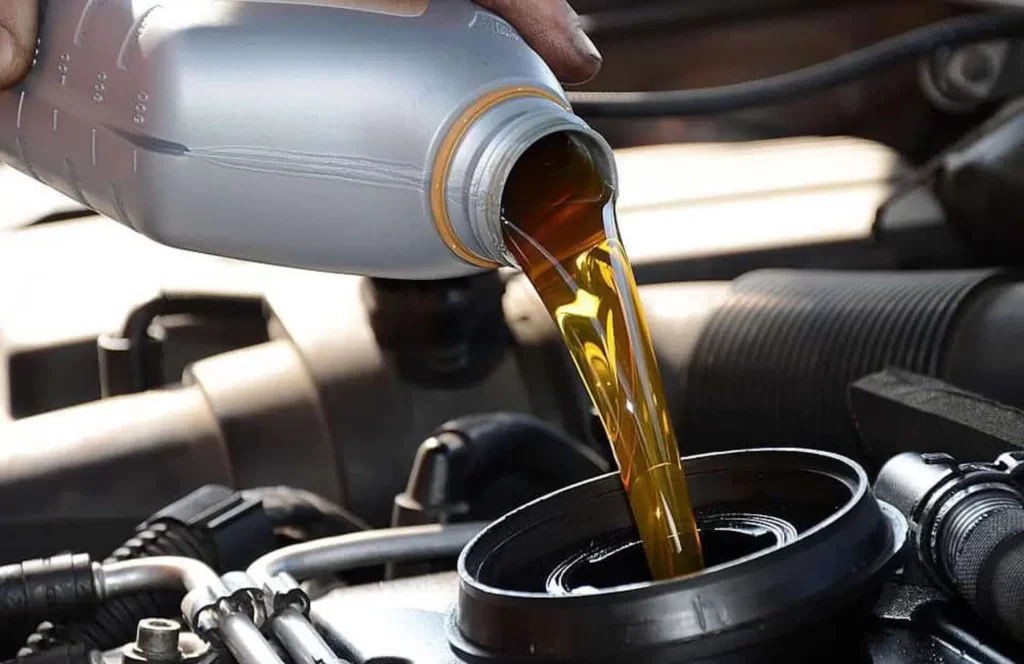
Preventing coolant from mixing with the oil in your ATV engine is essential for maintaining the health of your vehicle.
Here are some tips to help prevent coolant from entering the oil system:
1. Regular Maintenance
Regular maintenance is crucial in preventing coolant from mixing with the oil in your ATV engine.
Following the manufacturer’s recommended maintenance schedule is essential to ensure that all systems are operating correctly.
2. Check Engine Temperature
When you’re driving, pay attention to the engine’s temperature. If the engine temperature rises, stop the vehicle immediately and let it cool down before continuing.
Going with an overheated engine can cause severe damage to the engine and lead to coolant mixing with the oil.
3. Inspect The Cooling System
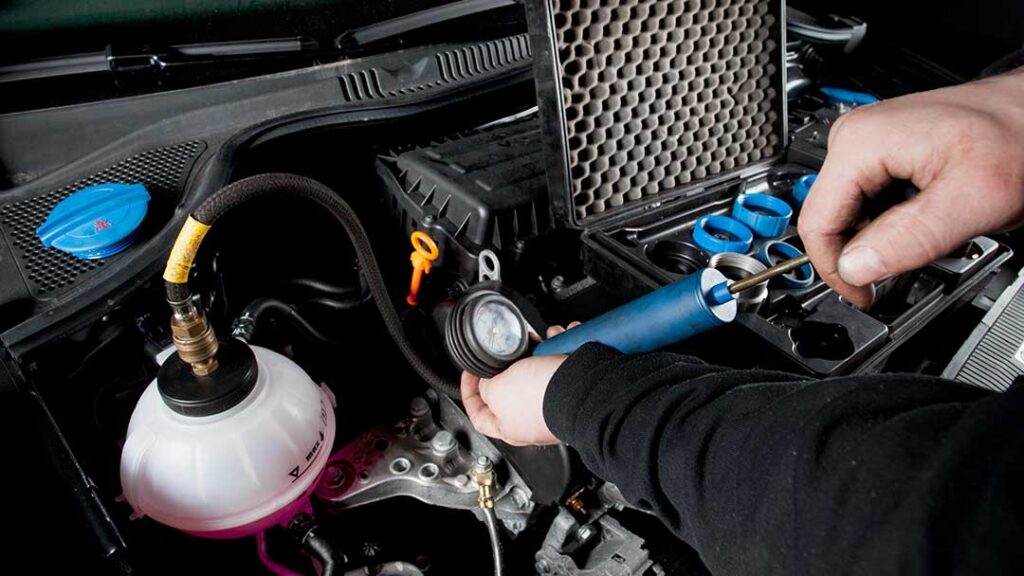
Regularly inspecting the cooling system for leaks or damage is another way to prevent coolant from mixing with the oil.
Check the hoses, radiator, and water pump for any signs of damage or wear. All worn or broken parts must be replaced right away.
4. Use High-Quality Parts
Always use high-quality parts when repairing or replacing any cooling system components.
Cheap or low-quality parts may not withstand the high temperatures and pressures of the engine, leading to failure and coolant mixing with the oil.
5. Use The Right Coolant
It is essential to use the correct type of coolant for your ATV.
Using the wrong coolant can lead to corrosion or other issues that can cause the coolant to mix with the oil.
Always consult the owner’s manual or a professional mechanic to ensure you use the correct coolant.
6. Don’t Overfill The Radiator
Overfilling the radiator can cause excess pressure in the cooling system, leading to leaks and coolant mixing with the oil.
Always follow the manufacturer’s recommended coolant level, and never overfill the radiator.
7. Properly Maintain The Head Gasket
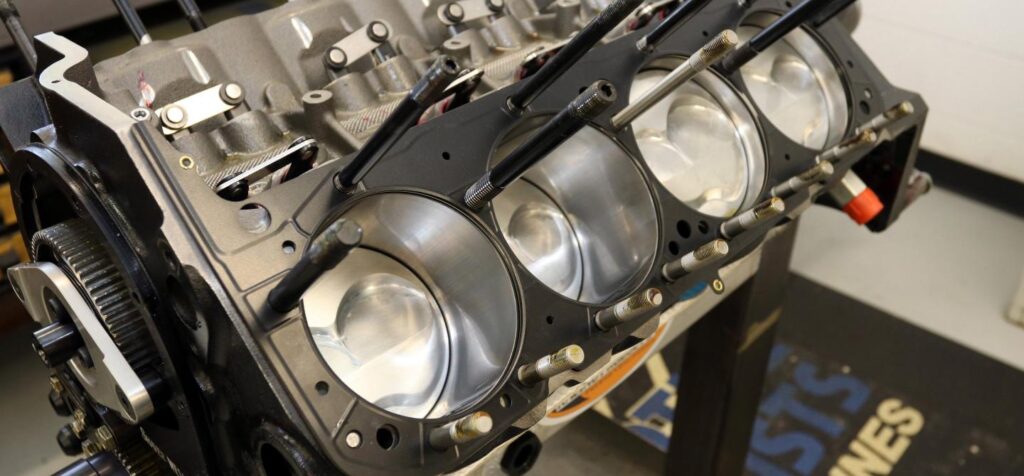
The head gasket is an essential engine that separates the oil and coolant systems.
Properly maintaining the head gasket can prevent leaks and coolant from mixing with the oil.
Regularly check the head gasket for signs of wear or damage, and replace it if necessary.
By following these tips, you can help prevent coolant from mixing with the oil in your ATV engine.
Regular maintenance and inspections and using high-quality parts and the correct coolant are essential in keeping your ATV running smoothly and preventing costly repairs.
Conclusion
Coolant mixing with oil in an ATV engine can be a severe problem that requires prompt attention.
Suppose you notice any symptoms of coolant in the oil, such as milky or frothy oil, overheating, loss of power, or white smoke from the exhaust.
In that case, having your ATV inspected by a professional mechanic is essential.
Fixing this issue can be a complex and expensive process, depending on the cause of the problem, so it is necessary to take steps to prevent it from happening in the first place by performing regular maintenance and keeping an eye on the engine temperature and cooling system.
Frequently Asked Questions
1. What Are The Symptoms Of Coolant Mixing With Oil In An ATV Engine?
Symptoms of coolant mixing with oil in an ATV engine may include milky or frothy oil, overheating, loss of power, or white smoke from the exhaust.
2. Can I Fix The Coolant In The Oil Myself?
Fixing coolant in the oil in an ATV engine can be a complex and expensive process, and it is recommended to have a professional mechanic inspect and repair the issue.
3. How Much Does It Cost To Fix Coolant In The Oil Of An ATV?
The cost of fixing coolant in the oil of an ATV can vary depending on the cause of the issue and the extent of the damage. It is best to get a quote from a professional mechanic.
4. How Often Should I Have My ATV’s Oil And Coolant Changed?
The frequency of oil and coolant changes for an ATV can vary depending on the make and model of the vehicle, as well as the manufacturer’s recommendations.
5. What Is The Best Course Of Action If I Suspect Coolant Is Mixing With The Oil In My ATV Engine?
If you suspect coolant is mixing with the oil in your ATV engine, it is essential to have the vehicle inspected by a professional mechanic as soon as possible to avoid further damage.
Also Read
- How Do I Know If My Atv Is Running Lean? – Symptoms Of A Lean ATV Engine
- How To Reverse Polarity On An ATV Starter? | Steps And Best Info In 2023
- How Long Should I Let My Atv Warm Up? | Tips To Prepare Your ATV For Cold Weather
- What Does Override Do On Atv? || Complete Information About Override Button
- Why Does My Atv Die When I Give It Gas? | 5 Reasons & How To Fix The Issue
